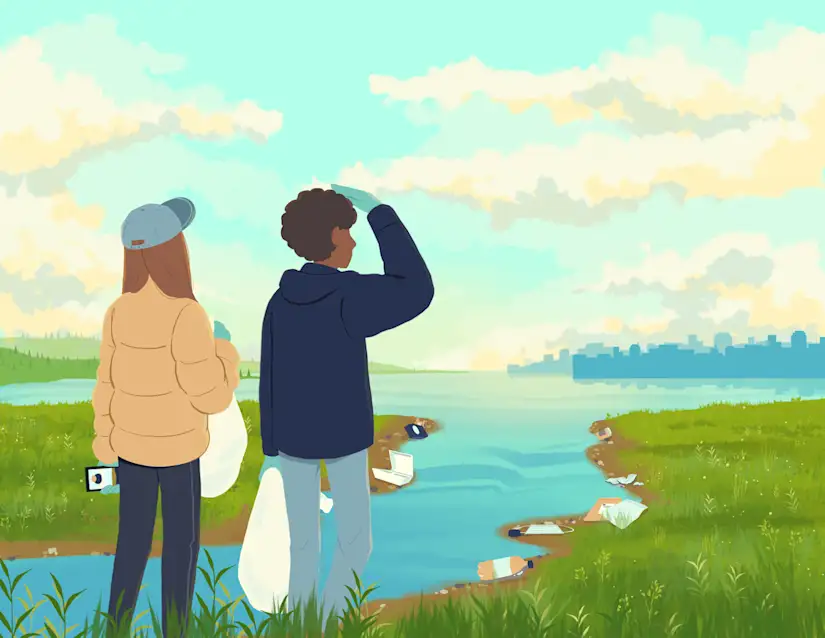Written by Rachel Gladstone
Debris Tracker is putting a spotlight on a very special project– Ohio River: Earth to Oceans. In March 2022, two student teams from the University of Georgia spent spring break collecting data along the Ohio River to understand plastic pollution in its watershed.

The Ohio River flows 981 miles through six states, from Pittsburgh, Pennsylvania to Cairo, Illinois. There, the Ohio meets the Mississippi River, eventually connecting to the Gulf of Mexico. More than 25 million people live in the Ohio River Basin and over five million people use the river as their source of drinking water.
However, plastics and other debris items threaten the health of the Ohio River and those who rely on it. Litter from our communities may wash or blow into storm water systems, creeks, and rivers and will ultimately end up in our oceans. For this reason, it is imperative to stop the flow of plastics and other waste into the Ohio River because it not only impacts this watershed, but it affects marine ecosystems hundreds of miles away - from earth to oceans.

The goal of the Ohio River: Earth to Oceans project was to combine data collection by trained researchers and citizen scientists to understand litter density and composition in the Ohio River Valley. Data was collected using Marine Debris Tracker.
In March 2022, two teams of UGA researchers collected data in four key sites in the watershed: Cairo, IL; Louisville, KY; Cincinnati, OH; and Stark County, OH. Additional priority surveying sites were selected after the initial data collection. Citizen scientists collected data at these priority locations from April 22, 2022, (Earth Day) to June 8th, 2022 (World Oceans Day).

Data Breakdown
Next, the data was analyzed to better understand the extent of plastic pollution along the Ohio River. 18,709 litter items were logged in 390 surveys. 15,785 items (84%) were logged by researchers, and 2,924 items (16%) were logged by citizen science volunteers.
Across the four communities, the top 10 most commonly logged items were the following:
cigarette butts
hard plastic fragments
plastic food wrappers
foam fragments
film fragments
paper and cardboard
plastic beverage bottles
glass fragments
aluminum or tin cans
foam or plastic cups.
82% of the items logged were plastic, followed by paper and lumber at 6% and metal at 4%.
Stark County had the highest average litter density at 2.21 items/m2. That is the equivalent to walking one lap around a track and seeing 884 items along the way. In total, researchers and citizen scientists logged a total of 8,278 items in Stark County in the cities of Massillon and Canton. 85% of the litter in Stark County was plastic.
Cairo, Louisville, and Cincinnati had litter densities of 0.76, 1.18, and 1.78 respectively items/m2. The average litter density across all sites in the Ohio River Basin was 1.50 items/m2.

Across the watershed, 1,014 litter items were tagged with brand names. PepsiCo, AB InBev, the Coca‐Cola Company, the Hershey Company, and Mars, Inc., were the top five most common parent companies identified in the litter, representing a variety of single‐use plastic beverage and snack products. The exception is AB InBev, which owns beer brands like Budweiser that are more often packaged in aluminum or glass.
The Ohio River: Earth to Oceans project is an excellent example of what we can do as a collective to understand plastic pollution in our communities. Data from this project can inform citizens and lawmakers about the health of their watershed, and ultimately promote change toward improving their communities.
Explore more in the Ohio River Storymap.
